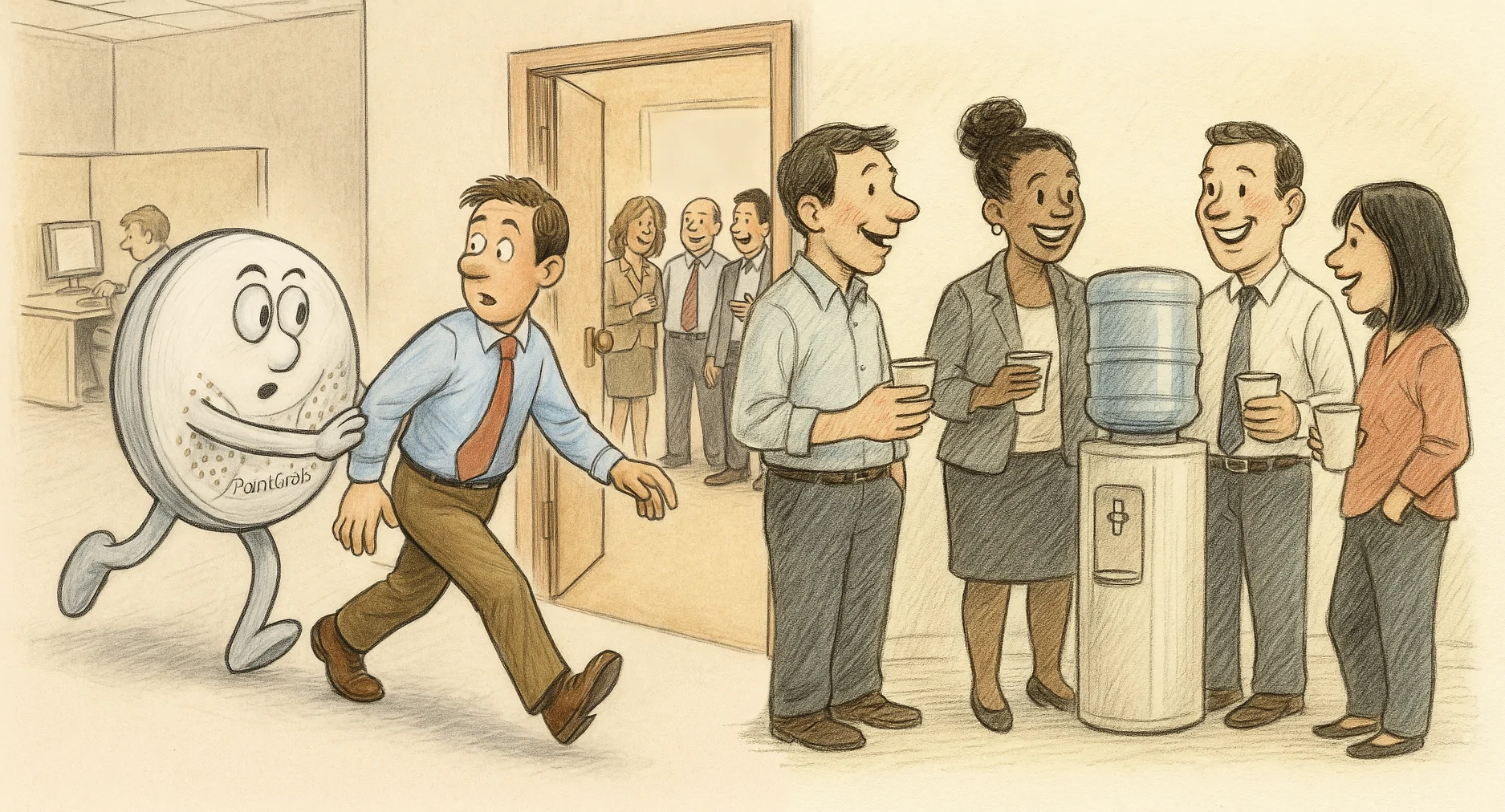Connections: measuring the office hidden value
Crossing Cultures, Connecting Ideas: The Global Power of Informal Encounters
Have you ever had a brilliant idea sparked by a casual chat in the hallway or a quick conversation while getting coffee? These unplanned moments of connection are the secret ingredient in a healthy workplace. They’re the subtle threads that weave an organization’s culture, no matter where in the world you are.
While the universal value of these encounters is undeniable, how we experience them can differ dramatically. An impromptu chat in a Milan office might be an animated, lively exchange with close conversation and gestures. In contrast, a similar interaction in Tokyo might be more reserved, with personal space keeping. These differences, rooted in cultural norms, can sometimes lead to misinterpretations. A Western manager might misread a Japanese employee’s polite silence as disengagement, while a Japanese colleague might feel overwhelmed by an Israeli animated exchange.

The Unseen Value of “Watercooler” Moments
Despite these cultural nuances, research consistently shows that the outcomes of these casual interactions are universally positive. Those spontaneous encounters—the watercooler chat, the quick brainstorm by the elevator, the impromptu coffee break—are crucial for building trust, creativity, and mentorship.
Some of the best ideas and discussions happen outside of formal meetings, in those moments of serendipity. They allow diverse perspectives to mix, sparking new insights and strengthening the social fabric of a team.
In a hybrid work world, this is more important than ever. When people spend less time in shared physical spaces, they lose the informal communication that fuels a sense of belonging & emotional connection to the company
A New Way to Measure Connection
As the saying goes, what gets measured gets managed. We need a way to measure these critical moments of connection, with relevant adjustments for local culture. For example, how long does an interaction need to be to “count”—20 seconds? And what is the optimal distance—three feet or two meters?
This is where a Collaboration Index comes in. Imagine a metric that measures the level of interaction across the office floor, regardless of how those interactions unfold. Using anonymous sensor data, this index could include not only dedicated collaboration hubs and meeting rooms but also map out “collision zones”—the coffee machine, the lounge area, a specific hallway—where people naturally gather. It doesn’t care whether the conversation is loud and expressive or quiet and reserved. It simply registers a valuable social exchange.
By using a Collaboration Index, leaders can:
- Design better spaces: Use data to identify the impact of amenities and designed areas that are optimized to encourage interactions.
- Bridge cultural gaps: Compare interaction patterns across different global offices without cultural bias, seeing how a quiet Japanese huddle and a lively Italian team both contribute to connection.
- Inform hybrid strategy: Understand collaboration trends in a specific site, gauge the impact of policies and investments, and match the Collaboration Index with other HR KPIs to see if it’s a leading indicator for important results like employee engagement and retention.
Ultimately, whether we gesture with our hands or use respectful silence, the core value of spontaneous interaction is the same worldwide. Every casual chat has the power to spark an idea, strengthen a relationship, and reinforce company culture. By intentionally measuring and nurturing these connections, we can build more innovative and inclusive workplaces for everyone.
Conclusion
The physical workplace, as part of an overall hybrid model, contributes in unique ways to a company’s success. By measuring the level of interaction on the floor, workplace leaders can provide HR with a vital new data point that can serve as a benchmark for policy and investment decisions.
